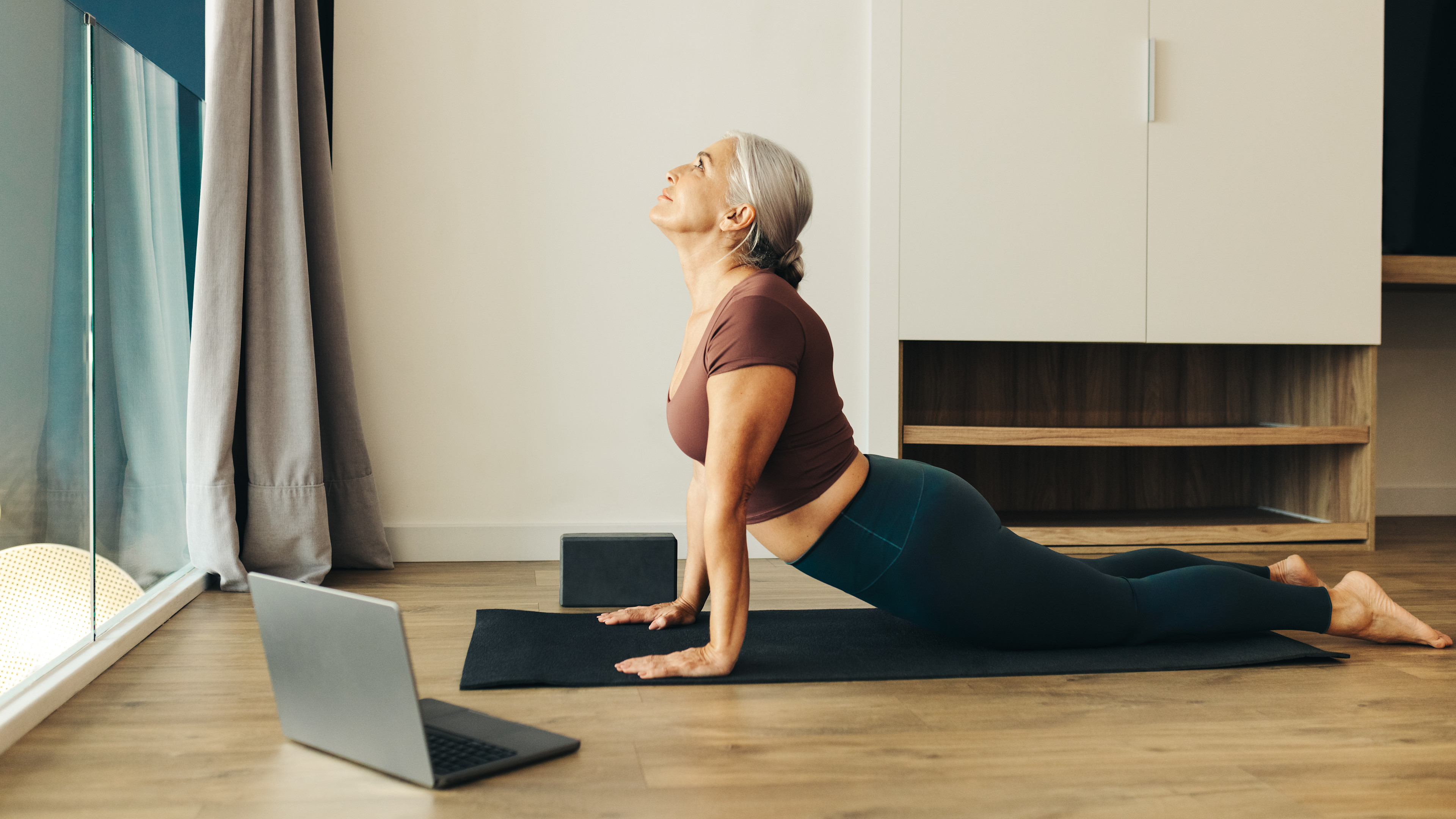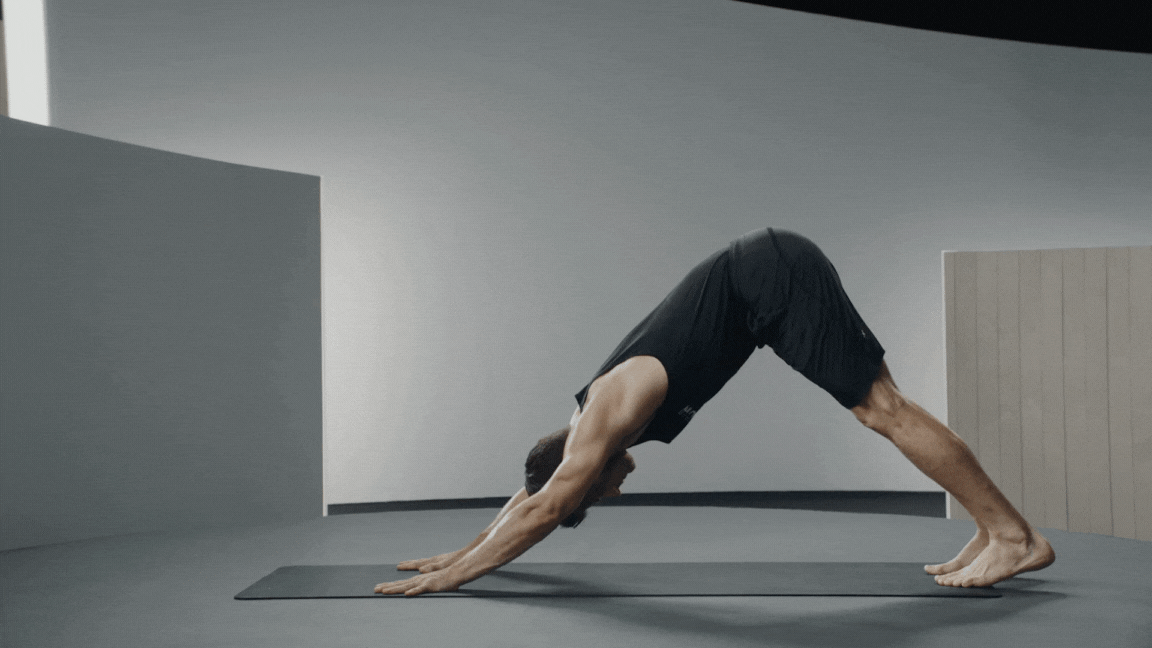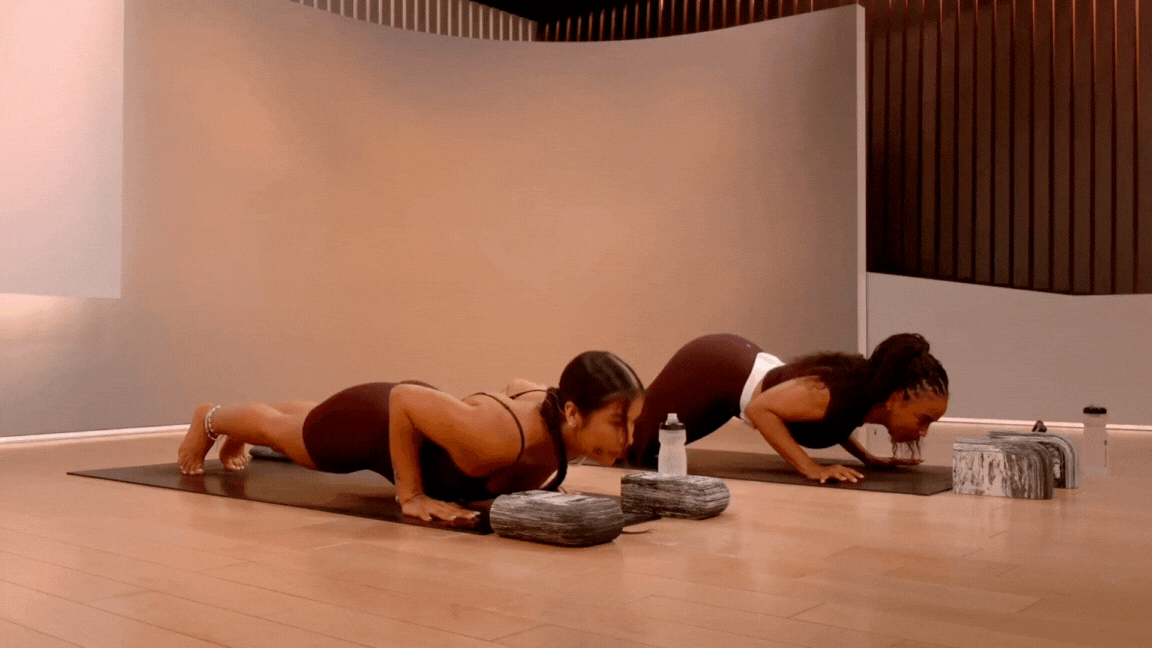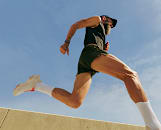
JLco - Ana Suanes via Getty Images
How to Finally Do Upward-Facing Dog the Right Way
This Sun Salutation mainstay is the ultimate opener for your chest, hips, and throat.
By Michelle Konstantinovsky•
What Is Upward-Facing Dog In Yoga?
The Benefits of Upward-Facing Dog
How to Do Upward-Facing Dog Pose Correctly
Mistakes to Avoid When Doing Upward Dog
Upward Dog Variations and Modifications
How to Incorporate Upward-Facing Dog Pose Into Your Yoga Routine
The Takeaway
Most regular yoga practitioners will admit that there's at least one pose (or asana) that they routinely speed through. It’s not necessarily that there’s anything unpleasant or particularly daunting about the pose—it’s just such a basic component of their practice, they may forget to pay much attention to its intricacies. And for many, that pose is Upward-Facing Dog (Urdhva Mukha Svanasana), an asana that shows up repeatedly in just about every Vinyasa class.
Discover more ways to reach your goals with Peloton
“It’s one of those foundational yoga poses that often gets rushed, but when practiced with intention, it becomes a powerful heart opener and backbend,” says lululemon Ambassador Shayla Stonechild, a special guest in Peloton’s Power in Presence collection of yoga and meditation classes with over 500+ yoga teacher training hours. “It acts as an energetic bridge between grounding and rising.”
Whether you’re brand new to the yoga world or you’ve lost your connection with the pose and want to brush up on the basics, here’s everything you need to know about Upward-Facing Dog, its benefits, variations, modifications, and more.

Peloton App
Access thousands of classes with no equipment needed.
What Is Upward-Facing Dog In Yoga?
Known in Sanskrit as Urdhva Mukha Svanasana (ūrdhva = up, mukha = face, śvān = dog), Upward-Facing Dog is a fundamental pose that involves placing all your weight into the palms of your hands and tops of your feet, allowing you to stretch your abdomen and chest. The pose opens the chest and lifts the head, serving as one of many backbends in the physical yoga practice.
Upward-Facing Dog (also called Upward Dog) is an integral part of the Surya Namaskar series, commonly known as Sun Salutations. Upward-Facing Dog typically follows Chaturanga in the context of a Vinyasa flow, leading you into Downward-Facing Dog, Shayla says.
Not only can Upward-Facing Dog seamlessly connect the elements of a Sun Salutation while providing a satisfying front-body stretch, but it can serve as a powerful standalone pose as well. “I like to think of it as a moment to reclaim and make space in the front of my body, opening up through my chest, my throat, and my heart,” Shayla says. “Whether practiced as part of a flow or on its own, it’s an asana that asks you to meet yourself with strength and softness at the same time.”
The Benefits of Upward-Facing Dog
Thanks to its unique alignment and execution, Upward-Facing Dog simultaneously strengthens the wrists, arms, and back while allowing the front body to open up (and if you’re a chronic typer, texter, or scroller, you know why all of that is such a potent antidote to a tech-induced slump). According to Shayla, Upward-Facing Dog is beneficial for:
Desk and sedentary workers who are hunched forward most of the day
Runners and other athletes who need to open up their chest and hips
Anyone holding grief or tension in their heart or shoulders
Anyone wanting to release tension in the neck and throat area
“Physically, it strengthens the arms, wrists, spine, and glutes while stretching the chest, shoulders, and abdomen,” Shayla says. “Energetically, it’s a posture that helps open the heart and throat chakra (Anahata and Vishuddha), and encourages vulnerability and courage.”

How to Do Upward-Facing Dog Pose Correctly
Here are Shayla’s step-by-step instructions for performing Upward-Facing Dog correctly and safely. If you’d prefer to hear this guidance from an instructor in real time, try one of the Focus Flow or Yoga Basics classes dedicated specifically to learning Upward-Facing Dog on the Peloton App.
Start by lying face down on a yoga mat. Place your palms under your shoulders near your lower ribs, with your legs extended long behind you and your elbows pointing up toward the sky.
As you roll your shoulders back, inhale and press into your hands, straightening your arms and lifting through your chest. Ground through your palms, and lift your hips and knees off the mat.
Draw your shoulders away from your ears and gently squeeze your shoulder blades together. Let your collarbones broaden as your heart lifts, without creating compression in your lower back.
Keep the legs active with the inner thighs hugging in, and engage all the way through the tops of the feet.
Gently lift your gaze forward or slightly upward. Keep the back of your neck long, reaching through the crown of your head toward the sky.
Stay here for 3 to 5 breaths. To come out of the pose, bend your elbows and slowly lower your body to the floor.
Try an Upward-Facing Dog Focus Flow on the Peloton App
Mistakes to Avoid When Doing Upward Dog
While Upward-Facing Dog is a common and seemingly simple yoga pose, it’s not necessarily easy—and because it’s repeated so often throughout a single practice, misalignment can lead to pain or injury. Here are some of the most frequent mistakes Shayla sees students make, along with form corrections:
1. Collapsing Into the Shoulders
One of the biggest challenges in Upward-Facing Dog is keeping the shoulders drawn back. Instead, it’s common to allow them to creep up toward the ears. To maintain strength and integrity in the posture, draw your shoulder blades together and down your back.
2. Letting the Thighs Rest on the Mat
While there’s not anything technically risky or wrong with allowing the thighs to remain on the mat, bringing them up is a signature part of the pose; leaving them down means you’re performing a different asana: Cobra Pose (Bhujangasana). “Both are valid, but they serve different purposes,” Shayla says. “Lift those thighs!”
3. Dumping Into the Lower Back
One of the most common, pain-inducing errors in Upward-Facing Dog is overarching the lower back, which can compress and put strain on the lumbar spine. To counter that tendency, engage your core and legs to distribute the backbend evenly.

Upward Dog Variations and Modifications
While Upward-Facing Dog is routinely incorporated into yoga classes of all levels, it may not be accessible for all bodies. Here are some of Shayla’s favorite variations and modifications of Upward Dog:
Sphinx Pose (Salamba Bhujangasana) or Baby Cobra
If you’re looking for a lighter and more accessible flow and/or you’re new to backbends, Shayla suggests slightly modifying your vinyasa to flow into Sphinx or Baby Cobra before attempting Upward-Facing Dog.
Sphinx Pose (Salamba Bhujangasana) is a gentler backbend that starts on the belly with legs extended behind you, and involves placing your elbows on the floor underneath your shoulders and your forearms and palms extended forward, pressed into the mat. From there, lift your chest and head away from the mat and hold for three to five breaths.
Baby Cobra is an even gentler form of the pose, and involves placing only light (or even no) weight in the hands, so your backbend is slightly smaller and your hands and wrists get more of a break.
Cobra Pose (Bhujangasana)
To reap the benefits of a backbend while remaining in a more gentle posture, try the full expression of Cobra Pose, which Shayla calls a great lower-intensity version of Upward-Facing Dog. To perform Cobra, move through the same cues as you would for Upward-Facing Dog, but keep your elbows bent and thighs on the ground.
Upward-Facing Dog with Props
Rather than putting all your weight into your hands and feet, try propping your body up with support tools to help take some of the pressure off your joints. “Place your hands on yoga blocks for added lift and shoulder space or place a blanket underneath your hips for extra support,” Shayla says.
How to Incorporate Upward-Facing Dog Pose Into Your Yoga Routine
While Upward-Facing Dog may typically be associated with Sun Salutations, Shayla says it’s also a great standalone pose that can help energize or ground you, depending on how you use it and what kind of result you’re hoping to achieve.
“You can practice Upward-Facing Dog on its own as part of a morning flow and/or use it as a reset between longer holds,” Shayla says. “I love incorporating it after breathwork or heart-centered meditations/flows; it physically mirrors that emotional opening. Start slow and start with curiosity!”
If you’re looking for a guided practice to try, check out the library of yoga classes on the Peloton App—many of which include Upward-Facing Dog.
The Takeaway
Upward-Facing Dog is an essential pose in yoga, particularly within the Vinyasa practice, and while it may seem straightforward, it puts the body and mind to work. Not only does the backbend help strengthen the wrists, arms, and back, but it also provides a much-needed stretch to the chest and abdomen, counteracting some of the everyday hunching so many of us inadvertently do while on our devices.
For Shayla, Upward-Facing Dog is more than a building block within a vinyasa or a physical exercise — it’s an opportunity to start fresh at any time. “This pose reminds me of the word miyo-pimâtisiwin, the Cree concept of ‘the good life,’” Shayla says. “When done with alignment and intention, Upward-Facing Dog helps us return to that good life. A life where we open our hearts without losing our strength and center.”
This content is for informational and educational purposes only and does not constitute individualized advice. It is not intended to replace professional medical evaluation, diagnosis, or treatment. Seek the advice of your physician for questions you may have regarding your health or a medical condition. If you are having a medical emergency, call your physician or 911 immediately.
Want to strengthen your yoga practice?
We can help. Enter your email to get articles, instructor tips, and updates from Peloton sent to your inbox.
By providing your email address, you agree to receive marketing communications from Peloton.
For more about how we use your information, see our Privacy Policy.















